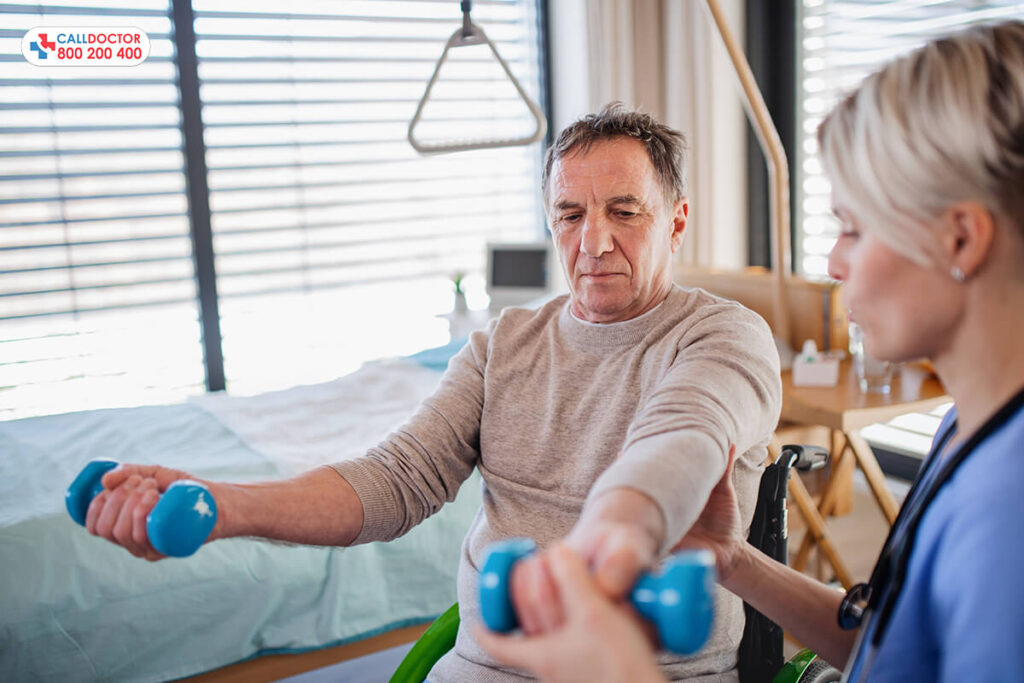Recovering from Injury or Surgery
Physical therapy plays a crucial role in the recovery process for individuals who have suffered from injuries or undergone surgery. It encompasses a range of techniques and exercises designed to improve mobility, reduce pain, and restore function. Whether someone has experienced a sports injury, undergone joint replacement surgery, or suffered from a traumatic accident, physical therapy is often an integral part of their rehabilitation journey.
Introduction to Physical Therapy
It is often called PT, is a healthcare profession focused on helping individuals regain movement and function following injury or surgery. It involves assessing, diagnosing, and treating musculoskeletal and neurological conditions. The primary goal is to restore patients to their maximum level of independence and functionality.
The Process of Rehabilitation
Rehabilitation is a multifaceted process that begins immediately following an injury or surgery and continues through recovery. It typically involves a combination of therapeutic exercises, manual therapy techniques, and patient education. The overarching goals of rehabilitation are to reduce pain, improve strength and flexibility, and enhance overall quality of life.
Types of Injuries and Surgeries
Physical therapy can benefit individuals recovering from a wide range of injuries and surgeries, including but not limited to:
- Orthopedic injuries (e.g., fractures, sprains, strains)
- Joint replacement surgery (e.g., knee replacement, hip replacement)
- Spinal cord injuries
- Traumatic brain injuries
- Sports-related injuries

The Role of Physical Therapists
Professional therapists are highly trained healthcare professionals specializing in musculoskeletal and neurological rehabilitation. They work closely with patients to develop personalized treatment plans tailored to their needs and goals. Expert therapists may utilize various techniques, including exercise therapy, manual therapy, and modalities such as heat and cold medicine.
Assessment and Evaluation
The rehabilitation process typically begins with a comprehensive assessment conducted by a physical therapist. This may include evaluating the patient’s range of motion, strength, balance, and functional abilities. Based on the assessment findings, the physician will develop an individualized treatment plan to address the patient’s impairments and limitations.
Developing a Treatment Plan
Treatment plans in physical therapy are highly individualized and may include a combination of exercises, manual therapy techniques, and other interventions. Physiotherapists work closely with patients to set realistic goals and establish a plan of care that addresses their unique needs and preferences. The treatment plan is continually reassessed and modified as the patient progresses through rehabilitation.
Physical Therapy Techniques
This encompasses various techniques and modalities to improve mobility, reduce pain, and enhance function. Some standard physical therapy techniques include:
- Range of motion exercises
- Strengthening exercises
- Manual therapy techniques (e.g., massage, joint mobilization)
- Balance and coordination exercises
- Electrical stimulation
- Ultrasound therapy
Importance of Consistency and Compliance
Consistency and compliance are crucial factors in the success of rehabilitation. Patients are encouraged to adhere to their prescribed treatment plans and exercise regularly at home. By consistently participating in different activities, patients can maximize their progress and achieve optimal outcomes.
Monitoring Progress
Physical therapists closely monitor their patient’s progress throughout the rehabilitation process. This may involve regularly assessing functional abilities, tracking improvements in strength and range of motion, and monitoring pain levels. Moreover. physicians may adjust the treatment plan based on the patient’s progress to ensure continued improvement.
Preventing Further Injury
In addition to aiding in recovery, physical therapy also plays a vital role in preventing further injury. Expert doctors educate patients on proper body mechanics, ergonomics, and injury prevention strategies to reduce the risk of future injuries. By building strength, flexibility, and resilience, patients can better protect themselves against future injuries.
Emotional Support and Motivation
Recovering from an injury or surgery can be emotionally challenging, and physical therapists provide essential emotional support and motivation throughout the rehabilitation process. They encourage patients to stay positive, set realistic goals, and celebrate their progress. Furthermore, they provide a supportive environment to help patients maintain the motivation to achieve their rehabilitation goals.
Integration into Daily Life
Physiotherapists work with patients to gradually reintegrate into their daily activities and routines as they progress through rehabilitation. This may involve transitioning from assisted devices (such as crutches or walkers) to independent mobility and practicing activities of daily living (such as dressing, bathing, and cooking). The goal is to help patients regain independence and confidence in their ability to perform everyday tasks.
Success Stories and Testimonials
Many individuals have experienced remarkable recoveries with the help of physical therapy. From professional athletes returning to the field after significant injuries to elderly adults regaining mobility after joint replacement surgery, countless success stories illustrate the transformative power of physical therapy. These success stories serve as inspiration for others embarking on their rehabilitation journey.
Challenges and Limitations
Therapy sessions can be highly effective in promoting recovery, there are challenges and limitations to consider. Some patients may experience setbacks or plateau in their progress, requiring additional interventions or adjustments to their treatment plans. Additionally, access to physiotherapy services may be limited in some geographic regions or for individuals with financial constraints.

Physiotherapy is crucial in rehabilitating individuals recovering from injury or surgery. Through therapeutic exercises, manual therapy techniques, and patient education patients regain mobility, reduce pain, and improve function. By providing personalized care and ongoing support, patients can achieve their rehabilitation goals and regain independence in their daily lives.
How long does a typical physical therapy session last?
The sessions typically last between 30 minutes to one hour, depending on the patient’s needs and the complexity of their condition.
How many sessions of physical therapy are usually needed?
The number of therapy sessions needed varies depending on the individual’s condition, injury severity, and treatment response. Some patients may only require a few sessions, while others may benefit from ongoing therapy over several weeks or months.
Is physical therapy painful?
The therapy should not be painful, although some discomfort may be experienced during specific exercises or manual therapy techniques. Communicating any pain or discomfort to your therapist is essential so they can adjust your treatment accordingly.
Can I do physical therapy at home?
Your expert therapist may prescribe home exercises and activities to complement your in-clinic sessions. Following your therapist’s instructions carefully and performing your exercises consistently for optimal results is essential.

How long does it take to see results from physical therapy?
The timeline for seeing results varies depending on the individual’s condition and treatment plan. Some patients may experience improvements in mobility and function within a few weeks, while others may require more time to achieve their rehabilitation goals.
If you’re struggling with pain, mobility issues, or recovering from surgery, don’t hesitate to take the next step towards your recovery journey. Contact Call Doctor today to schedule an appointment to regain strength, mobility, and independence. Taking proactive steps towards your health and wellness is essential for a full and speedy recovery. Don’t wait any longer – take control of your health and call a doctor now to start your path toward a healthier, happier you.




